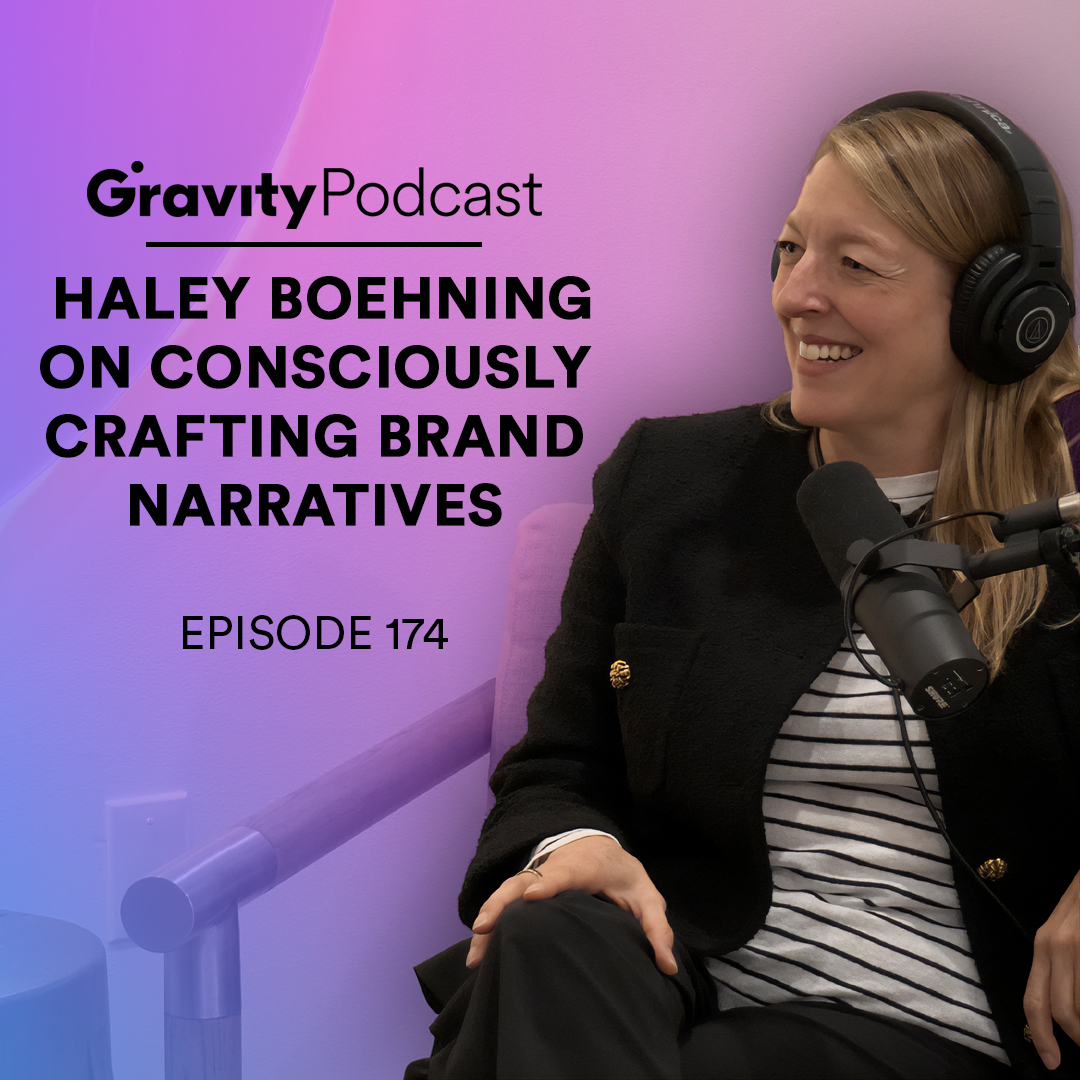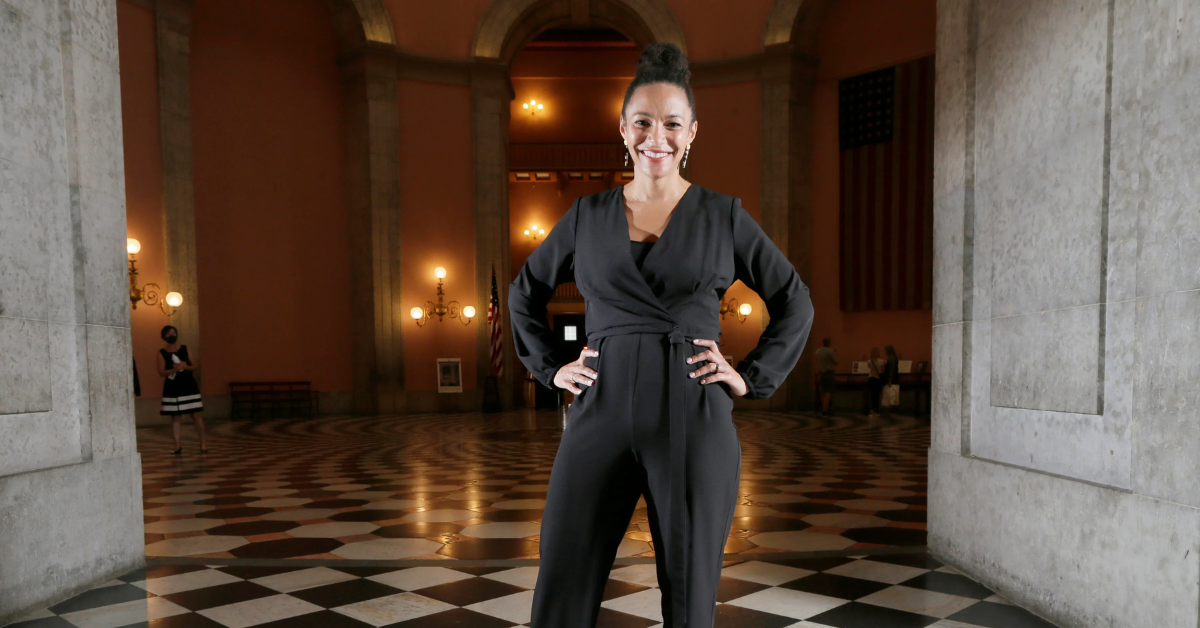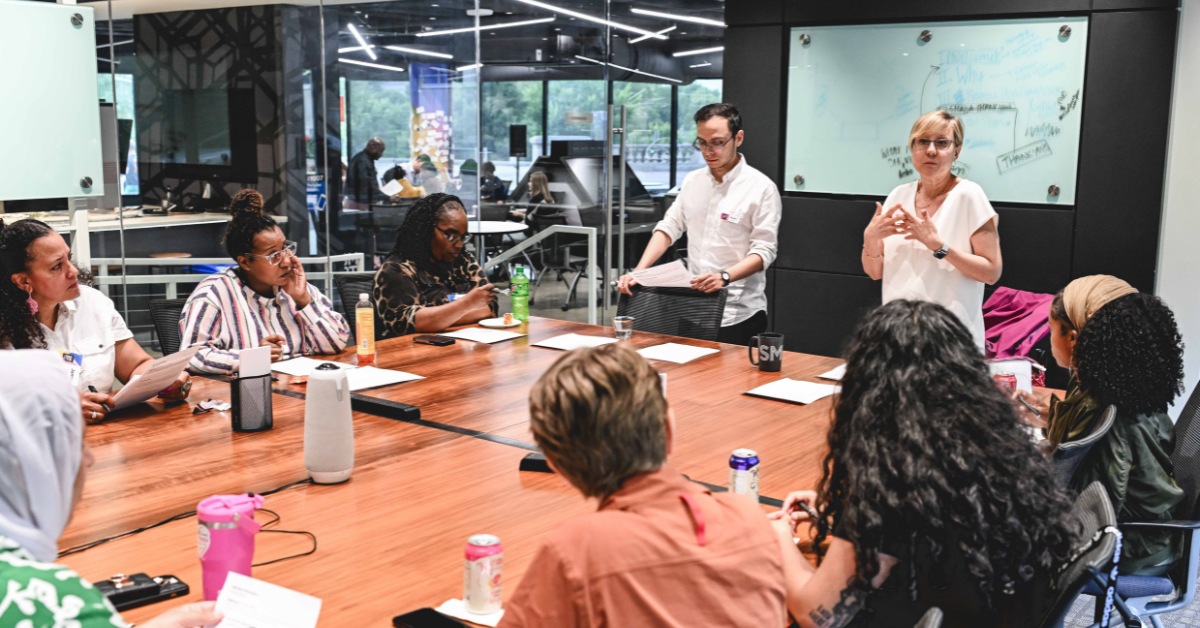“A lot of people start with the tool: ‘I need a logo. I need it to look good.’ When really, it is 3 or 4 steps upstream where they are having the issue: everybody is on a different page, people are going in five different directions, nobody is sure what the priorities are. And it’s usually at this moment – when there is dissonance, there is conflict – that businesses look for something to solve that problem. It is usually just as simple as getting everyone on the same page.”
– Haley Boehning
Last fall, CEO Haley Boehning joined Brett Kaufman, founder and CEO of Kaufman Development, and creator of Gravity, on his Gravity Podcast for an engaging dialogue about the power of storytelling in fostering alignment and engagement within organizations.
Haley shared her personal journey to entrepreneurship, and her insights on business as a force for good, conscious capitalism, and purpose-driven leadership.
Below are key highlights from their impactful conversation. Listen to the full episode here: #174 “Haley Boehning on Consciously Crafting Brand Narratives”
The journey to Storyforge
Haley’s lifelong passion for storytelling led her to found Storyforge in 2014: “I was immediately as a young child attracted to story and storytelling and theater… I think I was always attracted to that idea of people coming together and working together to do something amazing.”
Drawing on her extensive experience with Fortune 500 companies, nonprofits, and startups, Haley explained Storyforge’s genesis, partially inspired by a frustration she shared with her original cofounder, Barry Chandler of Stories & Sips.
“We were both frustrated by the same thing… that businesses were often telling the wrong story for the wrong reasons, and that a lot of money and a lot of time and investment was made by businesses creating these big, beautiful, glossy brand books that would then sit on a shelf because nobody knew how to use them.”
And she shared that in the early years, even Storyforge didn’t go far enough:
“I really believed that if I could do the work and help the leadership team have the insights, talk to their stakeholders, help them understand all of the needs that they were filling, and create that meaningful story around it, then everything would be solved. And what I think we’ve realized over the last couple of years, is there’s a lot of work that happens after that. You need to get everybody on the page. You need to create alignment. We need to make sure that everything about your business and everyone in your business is living that story every day.”
Storytelling as transformation
Haley shared that they do get calls from businesses seeking websites, logos, and branding. However, when they dig down deeper, it’s almost never about the nuts and bolts of telling the story, but rather about deeply hearing and living it.
“Tactical artifacts of your brand can only be developed accurately if you have the answers to the really fundamental essential questions about who you are and why you do what you do. Otherwise, how do you know if the colors are right? How do you know if it’s the right logo?”
She used a compelling metaphor to describe purpose-driven businesses:
“Purpose-driven businesses are more like sailboats than they are like motorboats… Sailboats know where they’re trying to go, but to get there, they have to consider the wind and the current and the weather, and they tack back and forth toward that goal… [teams need] everybody to understand: what are the parameters? What are we trying to do and why?”
Brett agreed:
“It does require a lot of ongoing work to continue to make sure that that is understood by everybody in the organization. And I have found that as we’ve grown and as I changed roles and got further away from the day-to-day of the business, that the messaging, the why we are here, who we are, how we do it, how we connect with people, what the purpose of all of this is, gets lost.”











